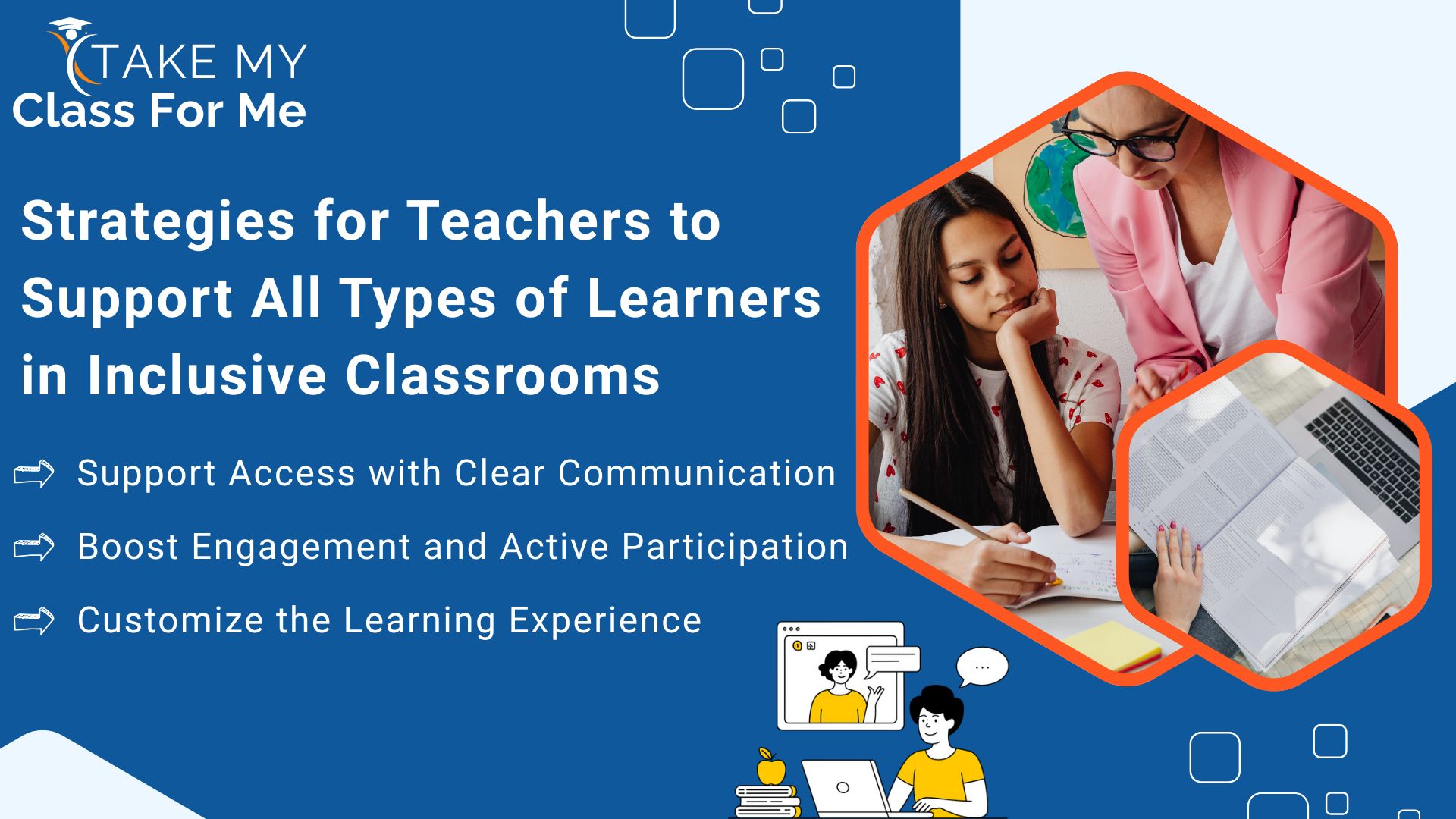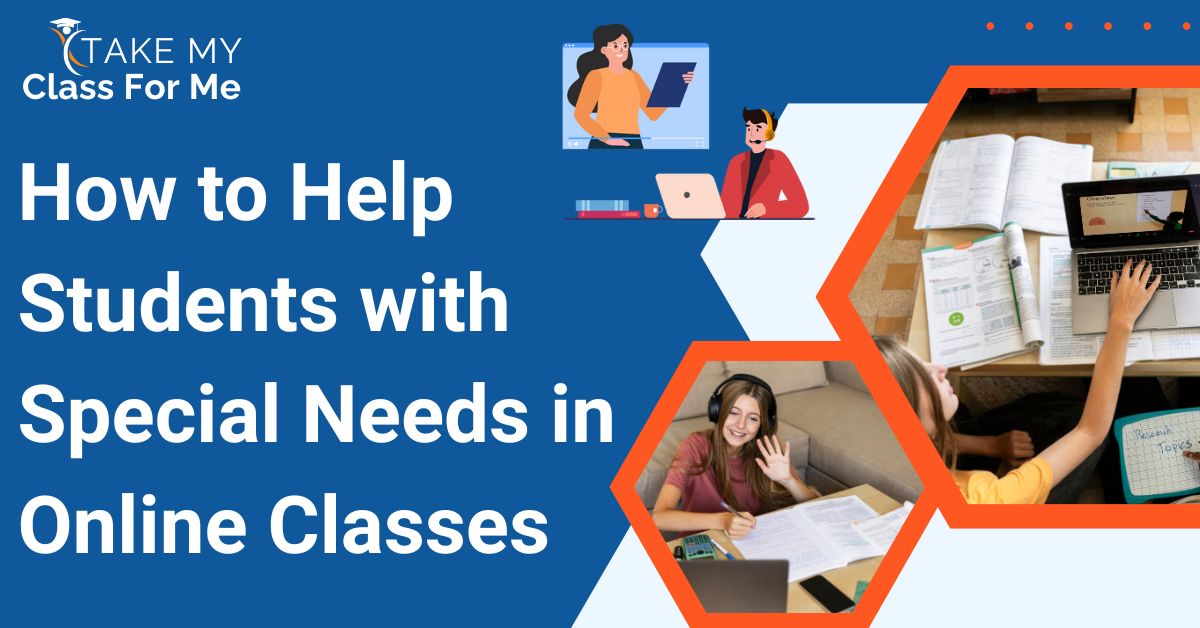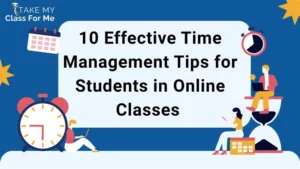Follow effective ways to support students with special needs in online classes. Simply by focusing on accessibility, clear communication, active participation, and personalized learning, teachers can create a more engaging, inclusive, and successful virtual learning experience for every student.
Online learning has changed the way education works. It brings new opportunities for flexible learning, but it also creates serious challenges, especially for students with special needs. Virtual classrooms can support these students by allowing them to learn at their own pace and in ways that suit their individual needs. However, if not planned carefully, online learning can make things more difficult and introduce new problems. Are you a teacher who is looking for useful tips and strategies to help students with special needs in online classes? If yes, then read this blog. Here, we have listed some common problems students with special needs face in online classes. Also, we have offered certain practical solutions to create a fair and supportive classroom for students with disabilities.
Challenges Students with Special Needs Experience in Online Learning
Online learning has made school very different for everyone, but it can be especially hard for students with special needs or learning differences like ADHD, dyslexia, or autism. While learning from home can be flexible, it often lacks the support and structure these students need to do their best. Many face extra challenges that can make it harder to learn, stay focused, and feel connected.
Here are some of the main problems students with special needs may face in online education:
- Not having the right technology or internet access makes it hard to join classes or use learning tools. Some students also struggle to use online platforms without help.
- Missing one-on-one support and special teaching methods can hurt learning. Many students need customized help, like what is listed in their Individualized Education Programs (IEPs), which is harder to provide online.
- Feeling lonely or anxious is common when students don’t get to see their teachers and classmates in person. This can be even harder for those who already find social situations challenging.
- Trouble with communication can affect learning. Students with speech or language difficulties may find it hard to understand lessons or share their thoughts, especially when learning depends on reading and writing.
- Falling behind in learning and skills can happen when students don’t get the support they need. Many parents say their children lost progress during online learning.
Strategies for Teachers to Support All Types of Learners in Inclusive Classrooms

Here are some simple and effective ways to support students with special needs in online learning:
Support Access with Clear Communication
For students with special needs, a good online learning experience starts with making sure they can easily access materials and understand what is expected. Clear communication and simple design are essential. Here are some easy ways to build a strong, supportive online learning environment:
- Choose learning tools that work well with screen readers, offer closed captions, let students adjust font sizes, and use high-contrast colors. Make sure documents can be read by text-to-speech tools.
- Use only a few learning platforms and keep layouts clean and easy to follow. Show students clearly how to move through lessons and activities. Simple backgrounds and easy-to-read fonts help reduce distractions.
- Provide step-by-step instructions in the same place every time. Use both words and visuals, like videos, to explain tasks. Make instructions easy to read or available in formats like large print or braille.
- Let students ask for help through email, chat, or video calls. Understand that some may prefer texting over face-to-face video. Stay in touch with parents or guardians to make sure the student is getting the right support.
Boost Engagement and Active Participation
Generally, keeping students with special needs interested and involved in online learning takes some creativity. So, it is important to use different ways to help students interact and learn based on their individual needs. Here are some ideas to improve engagement and participation:
- Include things like polls, quizzes, and group projects in small breakout rooms. Present lessons using videos, audio, text, and hands-on activities to fit different learning styles. For students who learn by doing, virtual labs or activities can help them remember better.
- Organize small group work and discussions to help students feel connected and supported. This also helps them practice social skills and stay motivated.
- Online learning can be tiring and overwhelming. Give students short breaks to rest and manage sensory overload so they can stay focused.
- Provide chances for students to connect socially through icebreakers or online clubs. Build trust with each student and provide emotional support to make the classroom a safe and welcoming place.
Customize the Learning Experience
Personalizing learning means adjusting teaching to fit each student’s needs, which is very important in special education. Online learning offers many tools that make it easier to customize lessons for every student. Here are some ways to do this effectively:
- Change lessons to fit different learning styles by offering choices in assignments, grouping students in flexible ways, and providing materials at various reading levels.
- Use helpful technology like text-to-speech or speech-to-text tools, and features such as screen magnification and voice control to support students.
- Let students learn at their own speed. Online classes can give students more time to understand the material, and recorded lessons let them watch again if needed.
- Have regular one-on-one meetings to talk about progress and challenges. Ask students for feedback to see what’s working and make changes to better support their learning.
How Online Class Help Services Benefit Students with Disabilities
Online class help services find out what each student needs and give support that fits them. For example, a child with ADHD often struggles to stay focused during online classes. As online learning is usually self-paced, it needs a lot of focus and discipline, which can be hard for them. This flexibility can sometimes cause them to get lower grades.
When students use “take my class for me” services, experts will help them finish their work on time, reduce stress, and improve their understanding. While the experts handle some parts of the online class, students can focus on learning.
Mainly, to provide customized tutoring services, experienced tutors from different educational backgrounds stay active 24/7. They help students get good grades in classes and exams. Many students with special needs feel anxious during tests, even if they are prepared. So, professionals also offer “take my online quiz” help. With this support, students with disabilities can do better and succeed in their studies and future careers.
Conclusion
As a teacher, simply by implementing the strategies recommended in this blog, you can create a positive learning environment for students with disabilities. In case you still need more insights on how to help students with special needs in online classes, approach us immediately. The experienced online education tutors in our team will provide valuable tips to create an inclusive classroom for diverse learners.





